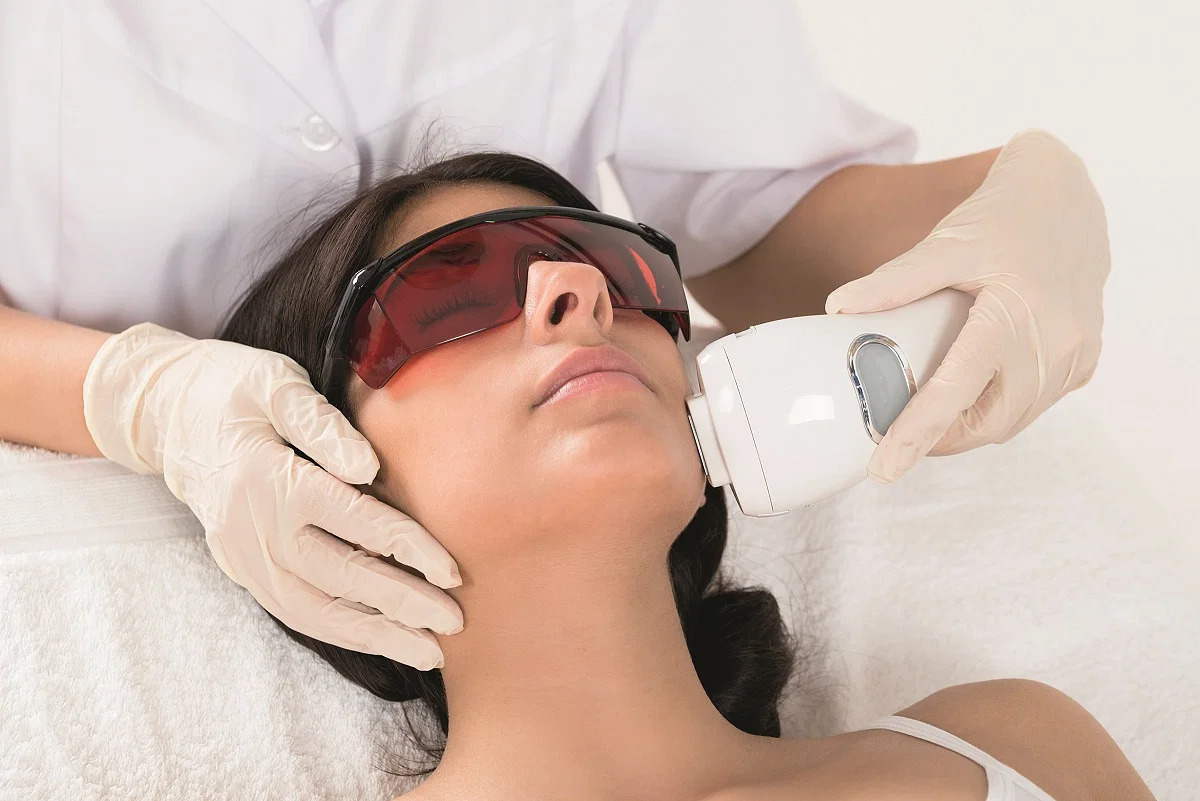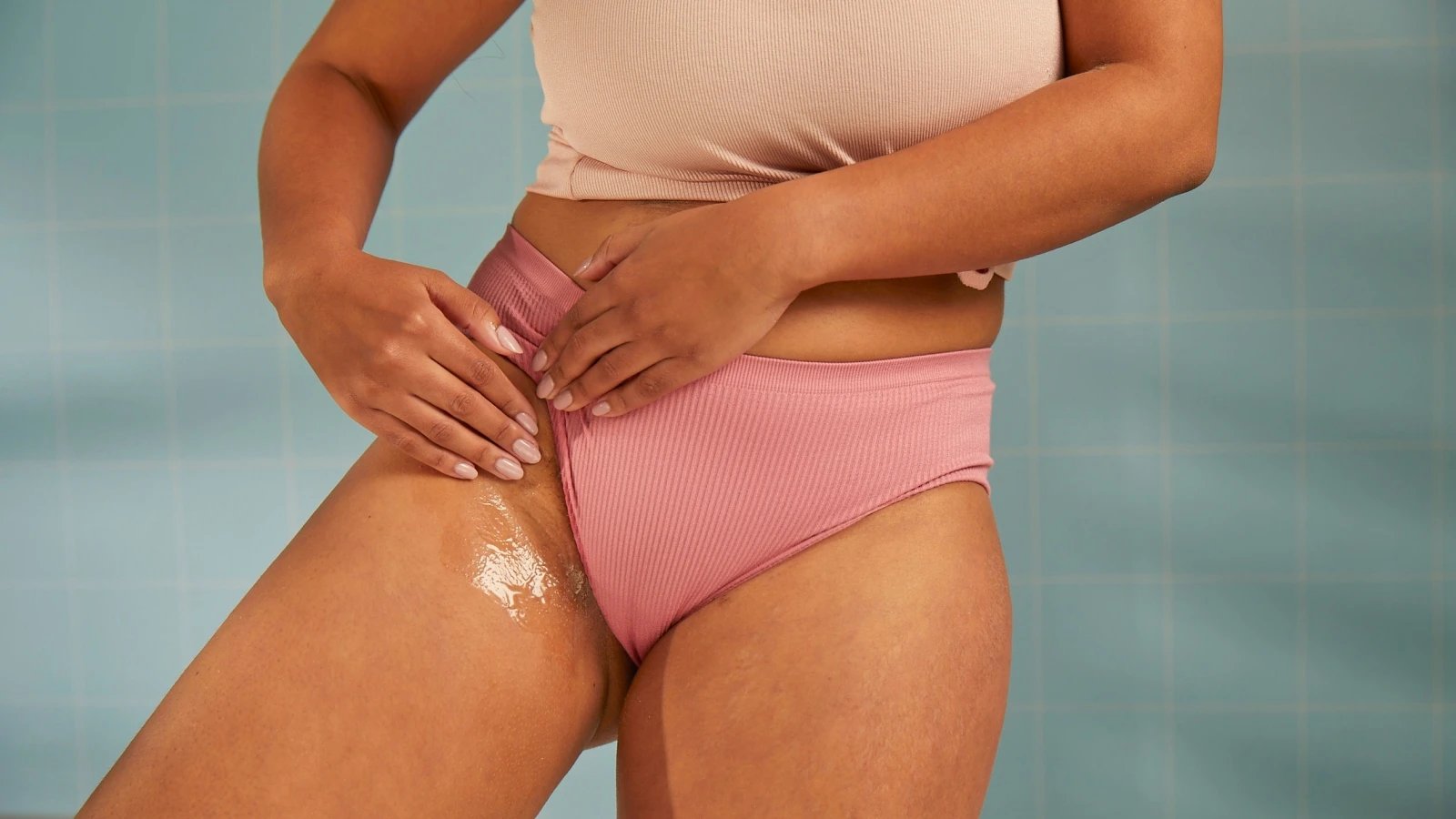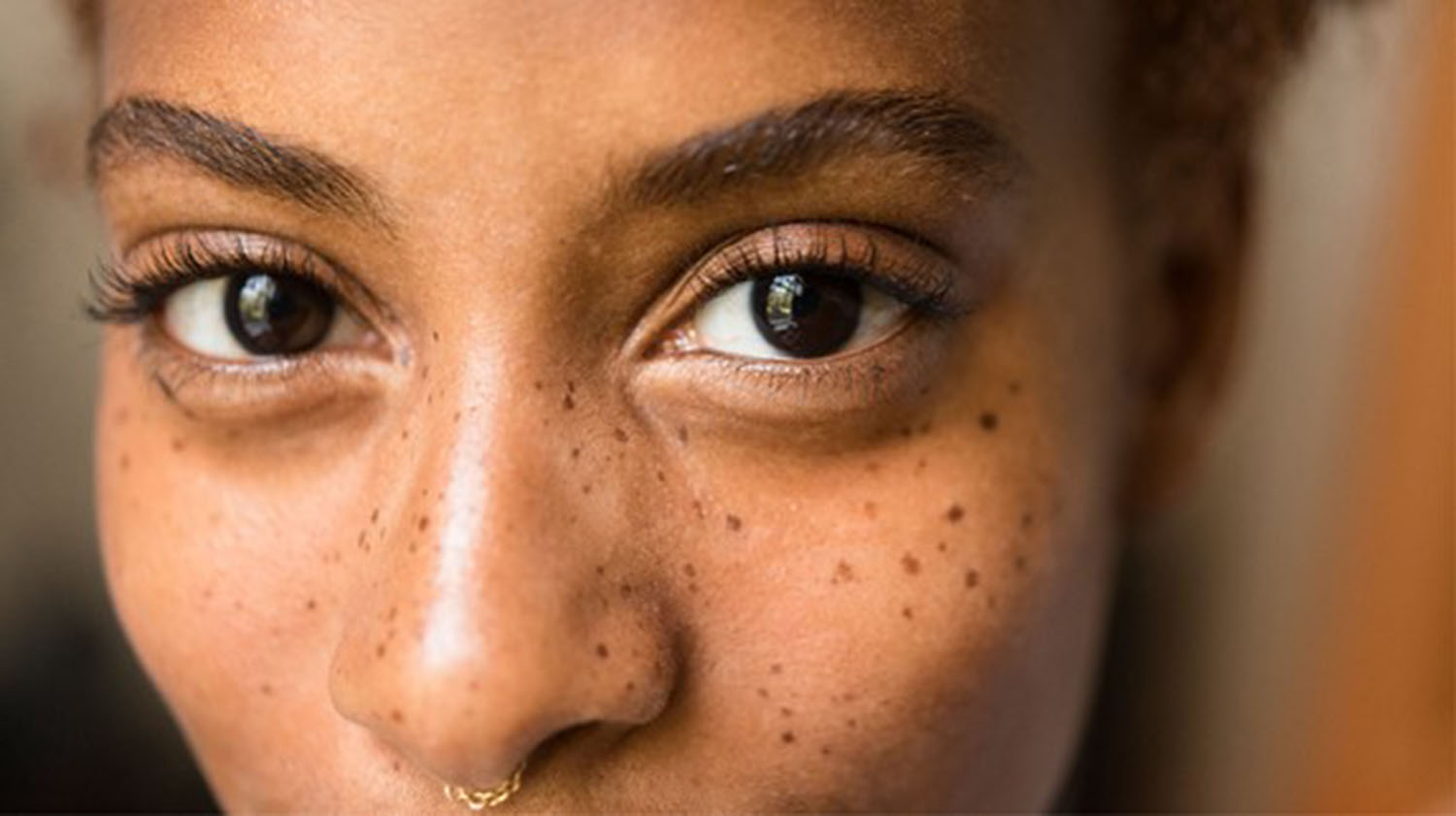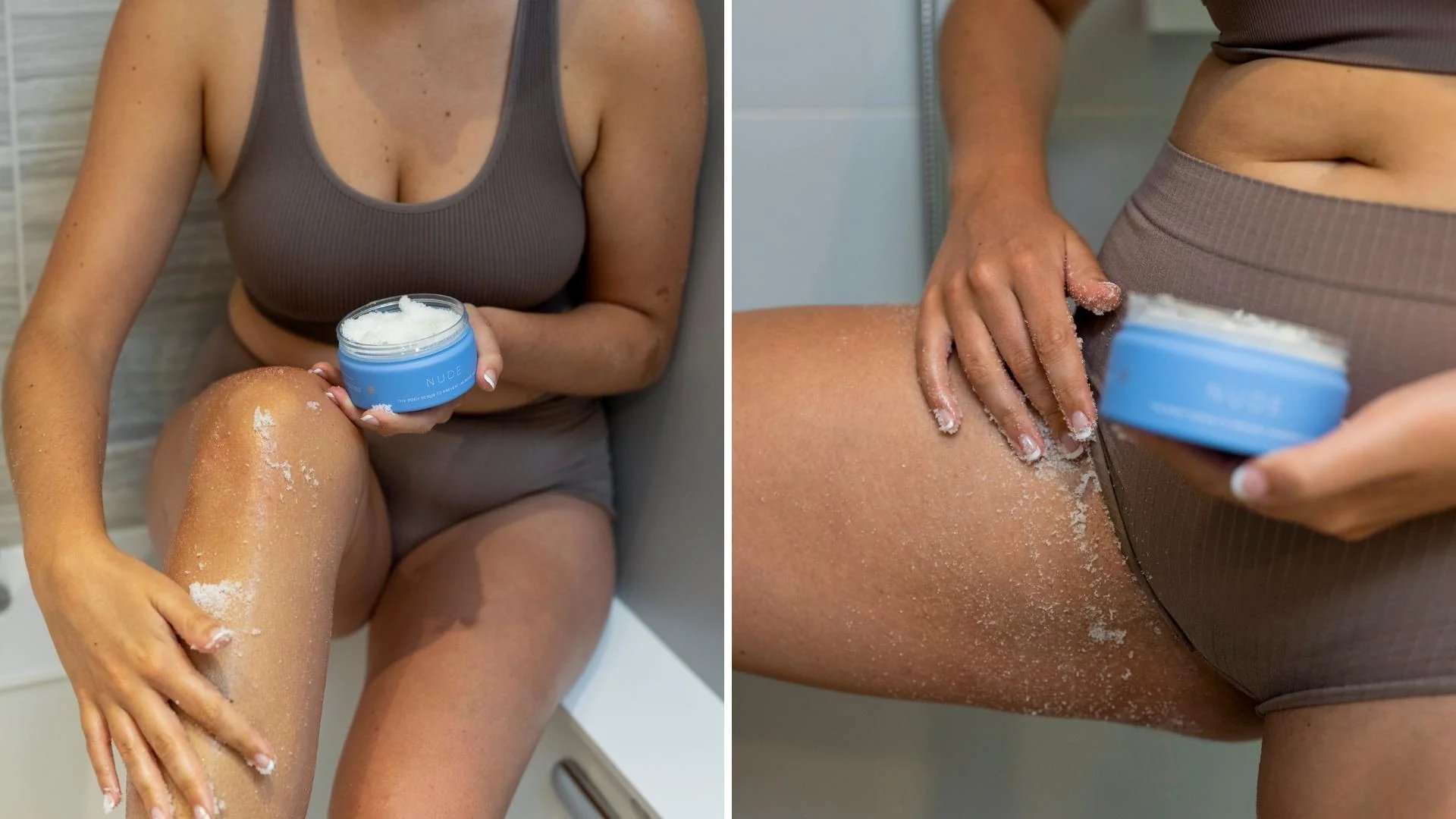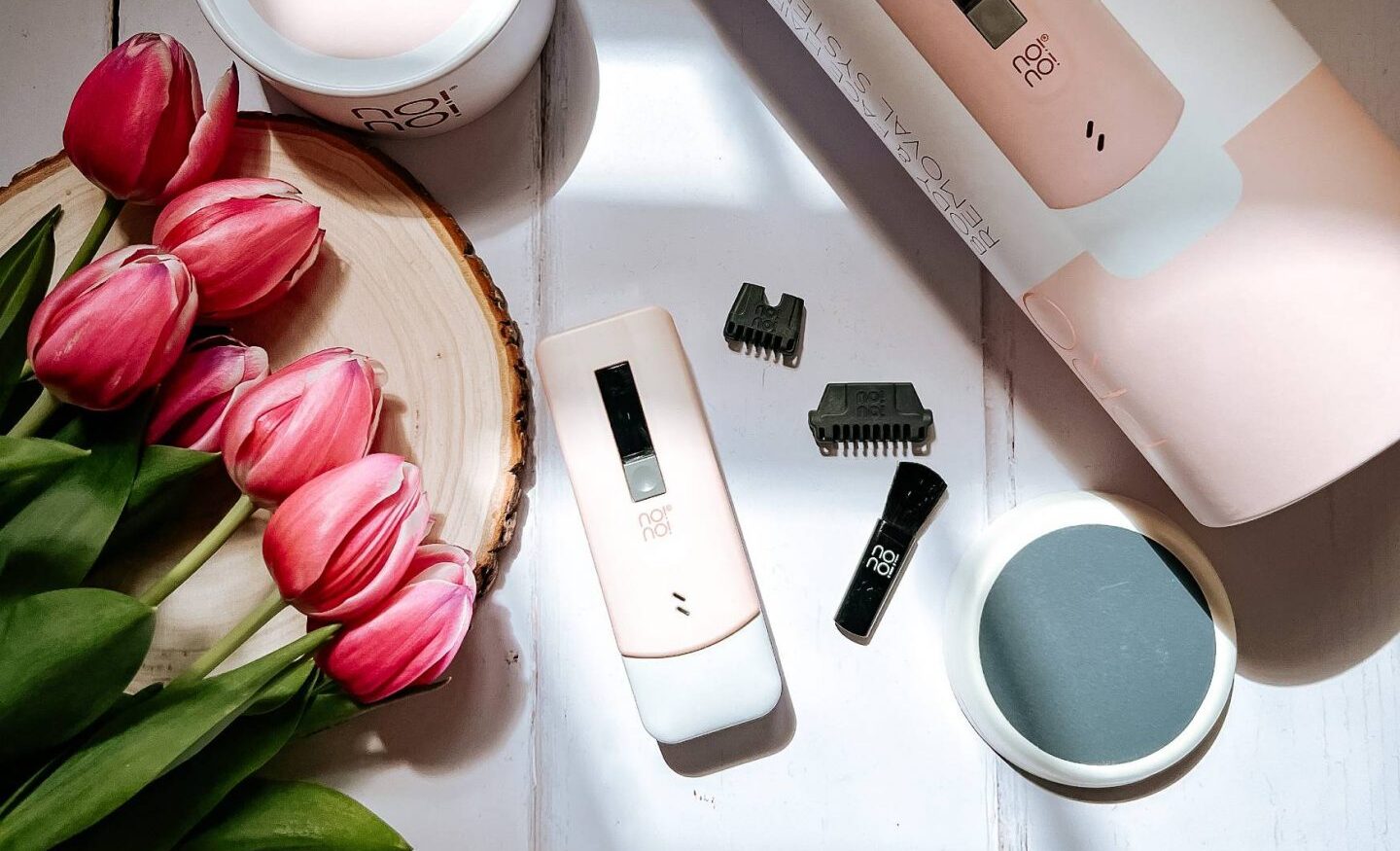Home>How-to Guides>For Women>How To Remove Hair From Bikini Area
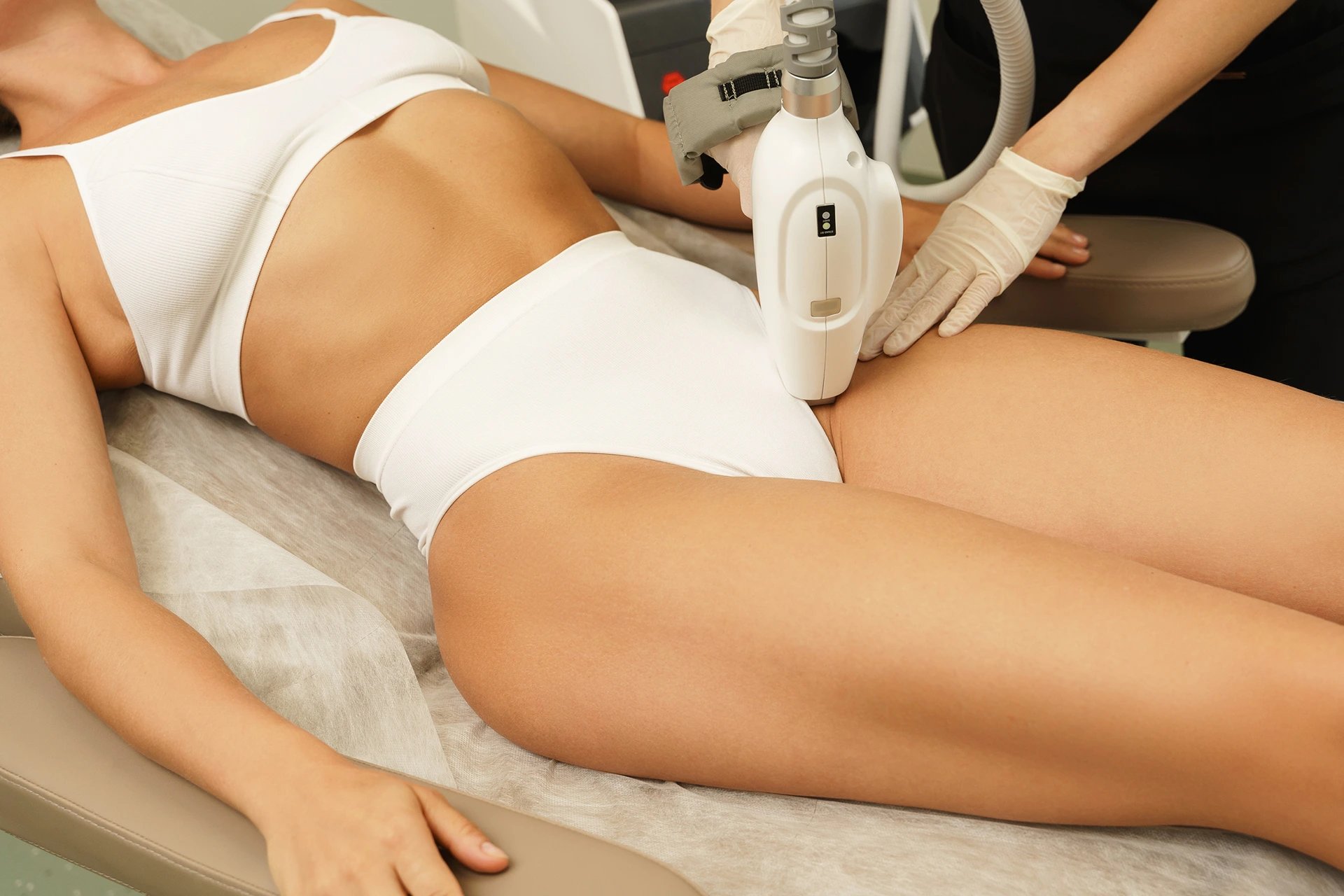

For Women
How To Remove Hair From Bikini Area
Modified: September 23, 2023
Learn effective methods for women to remove hair from their bikini area. Find helpful tips and techniques to keep your skin smooth and irritation-free.
(Many of the links in this article redirect to a specific reviewed product. Your purchase of these products through affiliate links helps to generate commission for Under-tec.com, at no extra cost. Learn more)
Table of Contents
Introduction
Welcome to the ultimate guide on how to remove hair from the bikini area! Whether you’re planning for a beach vacation or simply prefer the feeling of smooth skin, finding the right hair removal method for your bikini area can make all the difference. In this comprehensive article, we’ll explore various techniques, discuss their pros and cons, and provide helpful tips for a smooth and pain-free hair removal process.
Keeping the bikini area hair-free has become a popular choice for many women for a number of reasons. First and foremost, it helps to enhance personal hygiene by reducing the chances of bacteria buildup and unpleasant odors. Additionally, removing hair from the bikini area can make you feel more confident, especially when sporting swimsuits or intimate apparel.
Luckily, there are several methods available for hair removal in the bikini area, and it’s important to find the one that works best for your preferences and skin type. We will explore popular options such as shaving, waxing, depilatory creams, and laser hair removal, highlighting their advantages and considerations.
Before diving into the details, it’s essential to remember that everyone’s skin is unique, and what works for one person may not work for another. It may require some trial and error to find the method that suits you best, so patience and persistence are key.
Now, let’s dive into the different methods of hair removal for the bikini area and discover which one may be the perfect fit for you!
Why Remove Hair from the Bikini Area?
Removing hair from the bikini area has become a common practice for many women, and for good reason. Let’s explore some of the key reasons why women choose to remove hair from this particular area:
- Personal Hygiene: One of the primary reasons for removing hair from the bikini area is to maintain personal hygiene. The hair in this region can trap sweat and bacteria, leading to unpleasant odors and potential infections. By keeping the area clean and hair-free, you can reduce the risk of such issues and maintain a fresh and hygienic feeling.
- Comfort: Many women find that removing hair from the bikini area increases their overall comfort, particularly during activities such as wearing tight-fitting clothing, exercising, or participating in water sports. Without the presence of hair, there is less friction between the skin and clothing, leading to a smoother and more enjoyable experience.
- Enhanced Intimacy: Removing hair from the bikini area can also enhance intimacy for some individuals. A hair-free bikini area may increase sensitivity and can add a new level of sensation during intimate moments. Additionally, it can boost self-confidence and make individuals feel more comfortable and attractive in intimate situations.
- Aesthetics: The visual appeal is another factor that drives women to remove hair from their bikini area. Many women prefer the look of smooth, hair-free skin in this region, whether it’s to feel more confident in swimsuits or intimate apparel or simply to align with their personal aesthetic preferences.
- Cultural and Societal Norms: In some cultures and societies, the removal of hair from the bikini area is considered the norm or an expectation. This can be influenced by societal beauty standards, fashion trends, or cultural traditions, and may play a role in an individual’s decision to remove hair from this area.
While everyone’s reasons for removing hair from the bikini area may vary, it ultimately comes down to personal preference and individual comfort. Whether it’s for hygienic reasons, physical comfort, enhanced intimacy, aesthetics, or cultural influences, finding the right hair removal method that suits your preferences and needs is key.
Different Methods of Hair Removal for the Bikini Area
When it comes to removing hair from the bikini area, there are various methods available. Each method has its own pros and cons, and finding the right one for you depends on factors such as desired results, pain tolerance, budget, and time commitment.
- Shaving: Shaving is perhaps the most common and convenient method of hair removal for the bikini area. It involves using a razor to trim or remove hair at the surface of the skin. Shaving is relatively inexpensive and can be done at home. However, the results are temporary, with hair regrowth typically occurring within a few days. Some individuals may experience razor bumps, skin irritation, or ingrown hairs.
- Waxing: Waxing involves applying hot or cold wax to the bikini area and then quickly ripping off the wax, along with the hair, from the root. Waxing provides longer-lasting results compared to shaving, as it removes hair from the root. However, it can be more painful and may cause temporary redness or irritation. Waxing can be done at home with DIY kits or by a professional in a salon.
- Depilatory Creams: Depilatory creams, also known as hair removal creams, contain chemicals that dissolve the hair, allowing you to wipe it away. These creams are easy to use and provide longer-lasting results compared to shaving. However, they may have a strong odor and can cause skin irritation or allergic reactions in some individuals.
- Laser Hair Removal: Laser hair removal is a more permanent solution for bikini area hair removal. It involves using laser technology to target and destroy hair follicles, preventing future hair growth. Laser hair removal requires multiple sessions, but the results can be long-lasting. However, it can be costly, and individuals with darker skin tones may require specific lasers to avoid skin damage.
It’s important to note that what works for one person may not work for another, as skin sensitivity, hair texture, and personal preferences can vary. Experimenting with different methods can help you find the one that suits you best. Additionally, it’s advisable to seek professional guidance or do thorough research before attempting any hair removal method to ensure safety and effectiveness.
Shaving
Shaving is one of the most popular and accessible methods of hair removal for the bikini area. It involves using a razor to trim or remove hair at the skin’s surface. Here are the key points to consider when it comes to shaving the bikini area:
- Convenience: Shaving is an incredibly convenient method, as it can be done in the comfort of your own home. All you need is a razor, shaving cream or gel, and some warm water. It is a quick and easy solution, especially for those on the go.
- Affordability: Shaving is a relatively low-cost hair removal option. Razors and shaving cream or gel are widely available at affordable prices, making shaving a budget-friendly choice.
- Immediate Results: One of the advantages of shaving is that it provides instant results. With just a few strokes of the razor, you can achieve a smooth bikini area. This makes shaving a suitable option for those last-minute beach trips or special occasions.
- Potential Discomfort: While shaving is generally painless, some individuals may experience mild discomfort or irritation, particularly if proper shaving techniques and precautions are not followed. Using a dull razor or shaving too quickly and aggressively can lead to razor bumps, skin irritation, or even nicks or cuts.
- Temporary Solution: Shaving offers temporary hair removal results. The hair is cut at the skin’s surface, meaning it will regrow relatively quickly. Depending on individual hair growth rates, you may need to shave the bikini area every few days to maintain a smooth look.
- Possible Ingrown Hairs: Ingrown hairs can be a common occurrence with shaving, especially if the hair is curly or coarse. These hairs can become trapped beneath the skin’s surface, causing redness, bumps, and discomfort. Proper exfoliation and moisturization can help reduce the likelihood of ingrown hairs.
When shaving the bikini area, it is important to use a sharp, clean razor and lubricate the skin with shaving cream or gel. Shave in the direction of hair growth to minimize the risk of irritation. Additionally, taking a warm shower or using a warm towel beforehand can help soften the hair, making it easier to shave.
Overall, shaving is a popular method of hair removal for the bikini area due to its convenience, affordability, and immediate results. However, it is important to take proper precautions to minimize the risk of irritation or ingrown hairs. Experimenting with different shaving techniques and products can help you find the approach that works best for you.
Waxing
Waxing is a popular method of hair removal for the bikini area. It involves applying hot or cold wax to the skin and then quickly pulling it off, along with the trapped hair, from the root. Here are some key points to consider when it comes to waxing:
- Longer-Lasting Results: Unlike shaving, which only removes hair at the surface, waxing removes hair from the root. This results in longer-lasting smoothness, as it takes more time for the hair to regrow. For most individuals, hair will typically start to reappear after two to four weeks.
- Thinner and Finer Regrowth: Another advantage of waxing is that over time, the regrowth tends to become thinner and finer. This can lead to a reduction in overall hair density, making future waxing sessions more manageable and less painful.
- Professional or DIY: Waxing can be performed at home using DIY kits or by a professional in a salon. While DIY kits provide convenience and cost savings, professional waxing ensures a more precise and thorough hair removal experience. Experienced estheticians can also provide personalized advice and recommendations.
- Potential Pain and Discomfort: Waxing does involve some level of discomfort, as the hair is pulled out from the root. The pain level can vary depending on an individual’s pain tolerance and the sensitivity of the bikini area. However, with regular waxing, many individuals find that the discomfort lessens over time.
- Possible Redness and Irritation: After waxing, it is common to experience temporary redness or irritation in the treated area. This typically subsides within a few hours. Applying a soothing lotion or aloe vera gel can help calm the skin and reduce any potential inflammation.
- Length of Hair Required: For effective waxing, the hair length should be at least a quarter of an inch. This allows the wax to adhere to the hair properly and be efficiently removed. It is important to avoid trimming the hair too short before a waxing session.
It’s important to note that certain medical conditions, medications, or skin sensitivities may make waxing unsuitable for some individuals. It is always recommended to consult with a professional or a healthcare provider if you have any concerns or specific conditions.
Overall, waxing offers longer-lasting results compared to shaving and can lead to thinner and finer regrowth over time. Despite the discomfort and potential irritation, many individuals prefer waxing for its longer-lasting and more thorough hair removal. Whether you choose DIY waxing at home or opt for professional waxing services, proper preparation and aftercare can help ensure a successful waxing experience.
Depilatory Creams
Depilatory creams, also known as hair removal creams, are another popular method for removing hair from the bikini area. These creams contain chemicals that break down the hair, allowing you to simply wipe it away. Here are some key points to consider when it comes to using depilatory creams:
- Simplicity and Convenience: Depilatory creams offer an easy and convenient solution for hair removal. They are widely available, affordable, and can be used in the comfort of your own home. Applying the cream is as simple as spreading it on the desired area and waiting for the specified amount of time.
- Longer-Lasting Results: Depilatory creams provide longer-lasting results compared to shaving. Since the hair is dissolved at or slightly below the skin’s surface, regrowth typically takes longer. Many individuals find that they can enjoy a hair-free bikini area for up to a week or longer.
- Minimal Discomfort: Depilatory creams are generally pain-free, making them an attractive option for those with low pain tolerance or sensitive skin. Unlike waxing or shaving, there is no risk of nicks, cuts, or pulling on the skin.
- Possible Chemical Odor: One common downside of depilatory creams is the potential strong chemical odor that accompanies them. The smell can vary depending on the brand and formulation. It is advisable to use the creams in a well-ventilated area to minimize any discomfort from the odor.
- Potential Skin Sensitivity: Some individuals may experience skin sensitivity or allergic reactions to the chemicals in depilatory creams. It is important to perform a patch test on a small area of the skin before using the cream on a larger area to ensure there are no adverse reactions.
- Varying Results: The effectiveness of depilatory creams can vary depending on the individual’s hair type and thickness. Thicker or coarse hair may require a longer application time, while finer hair may be removed more easily.
It is important to carefully follow the instructions provided with the depilatory cream. Leaving the cream on for too long can irritate the skin, while not leaving it on for long enough may not effectively remove the hair. It is also recommended to avoid applying the cream on broken or irritated skin.
As with any hair removal method, it is wise to do a small patch test before using the product on a larger area. This will help you determine if the cream is suitable for your skin and if any adverse reactions occur.
Overall, depilatory creams offer a simple and pain-free method for removing hair from the bikini area. They provide longer-lasting results compared to shaving and can be a viable option for those looking for an alternative to waxing or other more invasive methods.
Laser Hair Removal
Laser hair removal is a popular option for those seeking a more permanent solution for hair removal in the bikini area. This method uses laser technology to target and destroy hair follicles, inhibiting future hair growth. Here are some important points to consider when it comes to laser hair removal:
- Long-Lasting Results: Laser hair removal offers long-lasting results compared to temporary hair removal methods. The laser targets the hair follicles, damaging them and inhibiting future growth. This means that you can enjoy significantly reduced hair growth in the bikini area for an extended period, often lasting months or even years.
- Efficacy and Precision: Laser hair removal is known for its effectiveness in reducing unwanted hair. The laser is able to selectively target dark, coarse hair while leaving the surrounding skin unharmed. This makes it a suitable option for individuals with fair to medium skin tones and dark hair.
- Professional Treatment: Laser hair removal is typically performed by trained professionals in specialized clinics or dermatology offices. Professional treatment ensures that the laser is used correctly and at appropriate settings. Additionally, experienced practitioners can provide personalized advice and recommendations based on your skin type and hair characteristics.
- Multiple Sessions: Laser hair removal is not a one-time solution, as hair grows in different cycles. Multiple sessions are typically required to target hair in different stages of growth. The number of sessions required varies depending on the individual, but it generally ranges from 6 to 8 sessions spaced several weeks apart.
- Potential Discomfort: While laser hair removal is generally well-tolerated, some individuals may experience mild discomfort or a stinging sensation during the treatment. This can vary depending on an individual’s pain tolerance and the sensitivity of the bikini area. Cooling gels or numbing creams may be applied before or after the treatment to minimize any discomfort.
- Considerations for Skin Types: It is important to note that laser hair removal is more effective for individuals with fair to medium skin tones and dark hair. Laser energy is absorbed by the pigment in the hair, so individuals with lighter hair colors, such as blonde or gray, may not experience the same level of success with laser hair removal.
Prior to undergoing laser hair removal, it is crucial to have a consultation with a qualified professional. This will allow them to assess your suitability for the treatment, discuss any potential risks or side effects, and create a personalized treatment plan.
While laser hair removal may have higher upfront costs compared to other methods, many individuals find it to be a worthwhile investment due to its long-lasting results. If you are seeking a more permanent solution for hair removal in the bikini area, laser hair removal may be a viable option to consider.
Tips for a Smooth and Pain-Free Hair Removal Process
When it comes to removing hair from the bikini area, the right preparation and techniques can make the process smoother and more comfortable. Here are some helpful tips to ensure a smooth and pain-free hair removal experience:
- Exfoliate Beforehand: Exfoliating the skin before hair removal helps remove dead skin cells and allows for a closer shave or better absorption of hair removal creams. This helps prevent ingrown hairs and improves the overall effectiveness of the hair removal method.
- Trim Longer Hair: If the hair in the bikini area is too long, it’s a good idea to trim it down to a manageable length before using any hair removal method. This makes the process easier and reduces the risk of getting the hair tangled in the razor or wax.
- Use a Sharp Razor: When shaving the bikini area, it is crucial to use a sharp and clean razor. Dull blades can cause more irritation and may not provide a close shave. Replace your razor blades regularly to ensure a smooth and effective shave.
- Apply Shaving Cream or Gel: Using shaving cream or gel helps lubricate the skin and improves razor glide, reducing the risk of nicks, cuts, and irritation. Choose a product specifically designed for sensitive areas to minimize any potential skin reactions.
- Follow Proper Shaving Technique: Shave in the direction of hair growth to minimize irritation and ingrown hairs. Take your time and use short, gentle strokes to avoid applying too much pressure. Rinse the razor frequently to remove any hair and shaving cream buildup.
- Consider Cold Compresses: After hair removal, using a cold compress or ice pack can help soothe the skin and reduce any redness or irritation. Wrap the cold compress in a clean cloth and apply it gently to the treated area for a few minutes.
- Moisturize Regularly: Keeping the bikini area moisturized is essential to maintain smooth and healthy skin. Apply a gentle, alcohol-free moisturizer after hair removal to hydrate the skin and reduce any dryness or tightness.
- Avoid Tight Clothing: After hair removal, opt for loose-fitting clothing to allow the skin to breathe and reduce friction. Tight clothing can cause further irritation and potentially lead to ingrown hairs.
- Don’t Overdo It: Give your skin time to recover between hair removal sessions. Overdoing it can lead to increased irritation, redness, and potential damage to the skin. Follow the recommended guidelines for each hair removal method and give your skin a break when needed.
By following these tips, you can significantly improve your hair removal experience in the bikini area. Each person’s skin is unique, so it may take some experimentation to find the techniques and products that work best for you. Take your time, be gentle with your skin, and prioritize its care before, during, and after hair removal.
Precautions and Possible Side Effects
While hair removal in the bikini area can help achieve smooth and hair-free skin, it is essential to be aware of potential precautions and side effects. Here are some important considerations to keep in mind:
- Skin Sensitivity: The bikini area is often more sensitive than other parts of the body. It is important to be cautious and test any hair removal product or method on a small patch of skin to check for any adverse reactions before applying it to a larger area.
- Potential Irritation: Some hair removal methods, such as shaving or waxing, can cause temporary skin redness, bumps, or irritation. This is usually a normal reaction and should subside within a few hours or days. Applying a soothing lotion or aloe vera gel can help calm the skin and reduce any inflammation.
- Ingrown Hairs: Ingrown hairs can occur after hair removal when the hair follicle becomes trapped under the skin instead of growing outwards. To help prevent ingrown hairs, exfoliate the bikini area regularly, moisturize the skin, and avoid wearing tight clothing that may cause friction.
- Allergic Reactions: Some individuals may have allergies or sensitivities to specific hair removal products. It is crucial to carefully read the ingredients list and perform a patch test before using a product on a larger area. If you experience any allergic reactions, such as itching, redness, or swelling, discontinue use immediately.
- Skin Discoloration: In rare cases, hair removal methods such as waxing or laser hair removal may cause temporary skin discoloration, particularly in individuals with darker skin tones. It is essential to choose a reputable professional and follow their recommendations to minimize any potential risks.
- Professional Advice: If you have any underlying skin conditions, medical concerns, or are unsure about the best hair removal method for you, consult with a dermatologist or a licensed skincare professional. They can provide personalized advice, recommend suitable products, and ensure your safety during the hair removal process.
Remember, every individual’s skin is unique, and what works for one person may not work for another. It is important to listen to your body and observe how it reacts to different hair removal methods. If you experience persistent or severe side effects, it is advisable to seek medical attention.
By taking necessary precautions, following proper techniques, and being mindful of your skin’s reaction, you can minimize the risk of adverse side effects and achieve a successful and safe hair removal experience in the bikini area.
Conclusion
When it comes to hair removal in the bikini area, there are various methods to choose from, each with its own advantages and considerations. Shaving offers convenience, affordability, and immediate results, while waxing provides longer-lasting smoothness. Depilatory creams offer an easy and pain-free option, and laser hair removal offers a more permanent solution. Ultimately, the best method will depend on individual preferences, pain tolerance, budget, and desired results.
Regardless of the method chosen, there are general tips that can help ensure a smooth and pain-free hair removal process. Exfoliating beforehand, using sharp razors, applying shaving cream or gel, and following proper shaving techniques can all contribute to a comfortable shaving experience. Trimming longer hair, considering cold compresses, and moisturizing regularly can also enhance the overall hair removal experience.
It is important to exercise precautions and be aware of possible side effects. Skin sensitivity, potential irritation, ingrown hairs, allergic reactions, and skin discoloration are all considerations to keep in mind. Consulting with professionals, such as dermatologists or licensed skincare experts, can provide personalized advice and ensure safety during the hair removal process.
In the end, finding the right hair removal method for the bikini area is a personal choice. It may require some trial and error to determine which method works best for your individual needs and preferences. By following the tips and precautions outlined in this guide, you can confidently navigate the world of bikini area hair removal, achieving the smooth, hair-free skin you desire.
